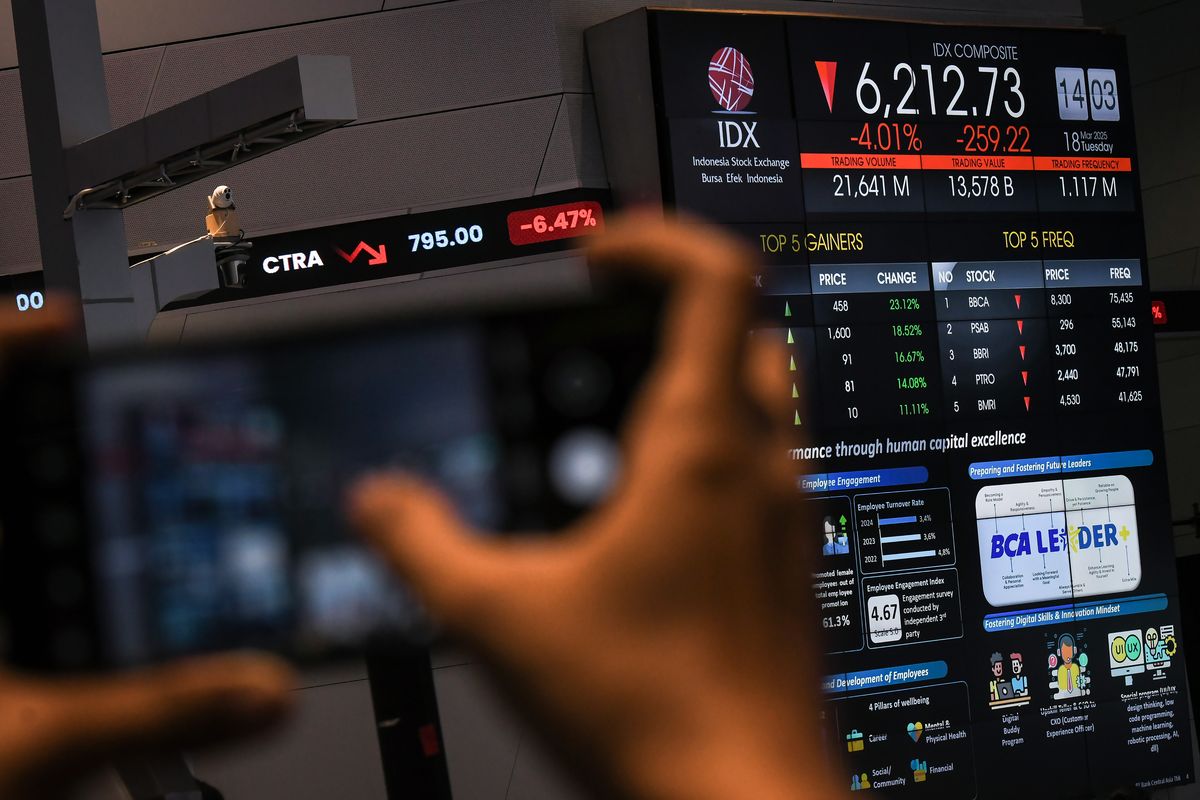On March 19, 2025, the Indonesia Stock Exchange (IDX) implemented a trading halt after the Jakarta Composite Index (JCI) plummeted by 5%. This significant market movement prompted concerns among investors and analysts about the underlying factors and potential repercussions on the nation's financial stability.
What Triggers a Trading Halt in Indonesia?
A trading halt is a temporary suspension of trading activities on a stock exchange, designed to prevent panic selling and allow investors to digest information during periods of significant market volatility. In Indonesia, the IDX has specific thresholds that, when breached, trigger such halts:
- A 5% decline in the JCI results in a 30-minute trading suspension.
- A 10% drop leads to a 60-minute halt.
- A 15% decrease causes trading to be suspended for the remainder of the day.
These measures aim to maintain market order and provide a buffer against rapid, uncontrolled sell-offs.
Factors Leading to the 5% Market Decline
Several elements contributed to the sharp decline in the JCI on March 19, 2025:
Global Economic Uncertainty
The global economy has been experiencing turbulence due to escalating geopolitical tensions and fluctuating commodity prices. These uncertainties have led to cautious investor sentiment, impacting emerging markets like Indonesia.
Domestic Economic Indicators
Recent reports indicated a slowdown in Indonesia's economic growth, with GDP expansion rates falling below expectations. This deceleration has raised concerns about corporate earnings and overall market performance.
Sector-Specific Challenges
Key sectors within the Indonesian economy, such as manufacturing and exports, have faced headwinds due to reduced international demand and supply chain disruptions. These challenges have directly affected the stock prices of companies within these industries.
Implications of the Trading Halt
The implementation of a trading halt carries several implications for the market and its participants:
Investor Confidence
While trading halts are designed to prevent panic, they can also signal underlying market weaknesses, potentially eroding investor confidence. It's crucial for regulatory bodies to communicate effectively during these periods to maintain trust.
Market Liquidity
Temporary suspensions can impact market liquidity, as participants are unable to execute trades. This can lead to pent-up demand or supply, resulting in increased volatility once trading resumes.
Regulatory Scrutiny
Frequent trading halts may attract regulatory scrutiny, prompting authorities to assess market mechanisms and consider adjustments to prevent future occurrences.
Market Response Post-Halt
Following the resumption of trading, the market exhibited mixed reactions:
- Short-Term Volatility: The immediate aftermath saw heightened volatility as investors reacted to the halt and underlying market concerns.
- Sector Rotation: Investors began reallocating assets, favoring defensive sectors such as consumer staples and utilities, which are perceived as more resilient during economic downturns.
- Foreign Investment Flows: There was a noticeable outflow of foreign capital, as international investors sought safer havens amid the uncertainty.
Strategies for Investors Amid Market Volatility
In light of such market events, investors are advised to adopt prudent strategies:
- Diversification: Spreading investments across various asset classes and sectors can mitigate risk.
- Long-Term Perspective: Focusing on long-term fundamentals rather than short-term market movements can help in navigating volatility.
- Staying Informed: Regularly monitoring economic indicators and market news enables informed decision-making.
Conclusion
The 5% decline in the Jakarta Composite Index on March 19, 2025, leading to a trading halt, underscores the interconnectedness of global and domestic factors influencing market dynamics. While such events can be unsettling, they also present opportunities for investors to reassess portfolios and strategies. Maintaining a balanced approach, staying informed, and focusing on long-term objectives remain key to navigating periods of market uncertainty.
Read More






 Thursday, 27-11-25
Thursday, 27-11-25







